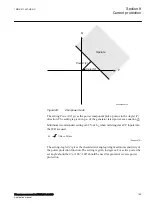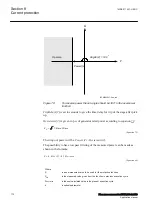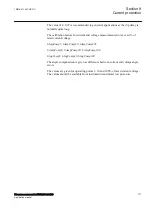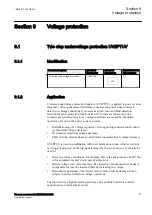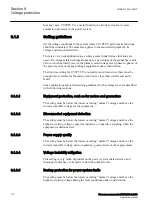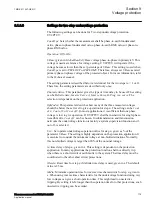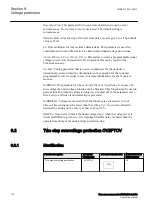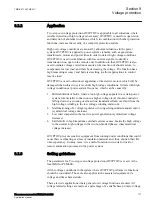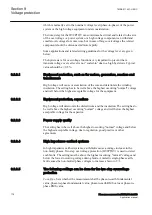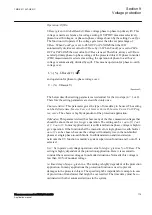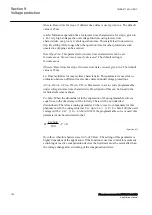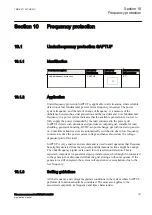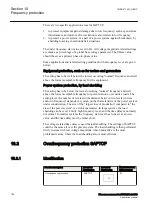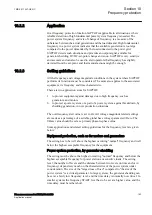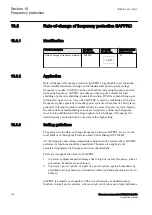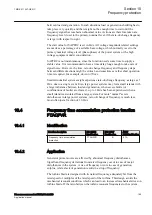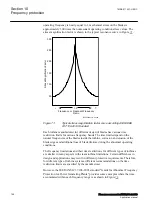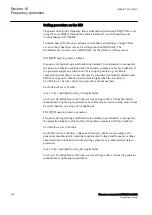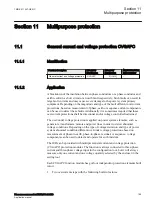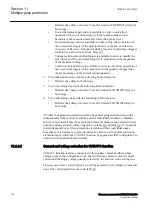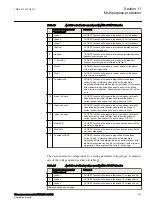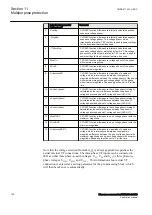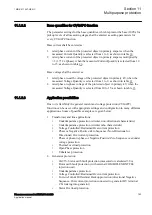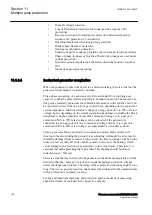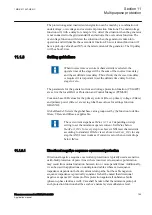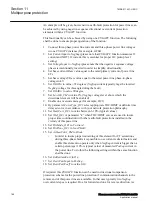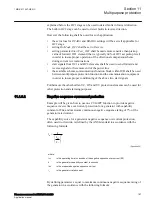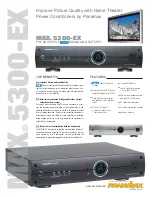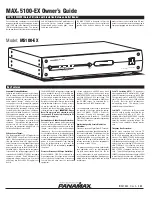
10.2.2
Application
M14952-3 v4
Overfrequency protection function SAPTOF is applicable in all situations, where
reliable detection of high fundamental power system frequency is needed. The
power system frequency, and rate of change of frequency, is a measure of the
unbalance between the actual generation and the load demand. High fundamental
frequency in a power system indicates that the available generation is too large
compared to the power demanded by the load connected to the power grid.
SAPTOF detects such situations and provides an output signal, suitable for
generator shedding, HVDC-set-point change and so on. SAPTOF is very sensitive
and accurate and can also be used to alert operators that frequency has slightly
deviated from the set-point, and that manual actions might be enough.
10.2.3
Setting guidelines
M14959-3 v7
All the frequency and voltage magnitude conditions in the system where SAPTOF
performs its functions must be considered. The same also applies to the associated
equipment, its frequency and time characteristic.
There are two application areas for SAPTOF:
1. to protect equipment against damage due to high frequency, such as
generators, and motors
2. to protect a power system, or a part of a power system, against breakdown, by
shedding generation, in over production situations.
The overfrequency start value is set in Hz. All voltage magnitude related settings
are made as a percentage of a settable global base voltage parameter
UBase
. The
UBase value should be set as a primary phase-to-phase value.
Some applications and related setting guidelines for the frequency level are given
below:
Equipment protection, such as for motors and generators
The setting has to be well above the highest occurring "normal" frequency and well
below the highest acceptable frequency for the equipment.
Power system protection, by generator shedding
The setting must be above the highest occurring "normal" frequency and below the
highest acceptable frequency for power stations, or sensitive loads. The setting
level, the number of levels and the distance between two levels (in time and/or in
frequency) depend very much on the characteristics of the power system under
consideration. The size of the "largest loss of load" compared to "the size of the
power system" is a critical parameter. In large systems, the generator shedding can
be set at a fairly low frequency level, and the time delay is normally not critical. In
smaller systems the frequency START level has to be set at a higher value, and the
time delay must be rather short.
1MRK 511 407-UEN C
Section 10
Frequency protection
Phasor measurement unit RES670 2.2 IEC
183
Application manual
Summary of Contents for Relion RES670
Page 1: ...RELION 670 SERIES Phasor measurement unit RES670 Version 2 2 IEC Application manual...
Page 2: ......
Page 46: ...40...
Page 52: ...46...
Page 92: ...86...
Page 112: ...106...
Page 178: ...172...
Page 216: ...210...
Page 232: ...226...
Page 286: ...280...
Page 328: ...322...
Page 340: ...334...
Page 380: ...374...
Page 381: ...375...

